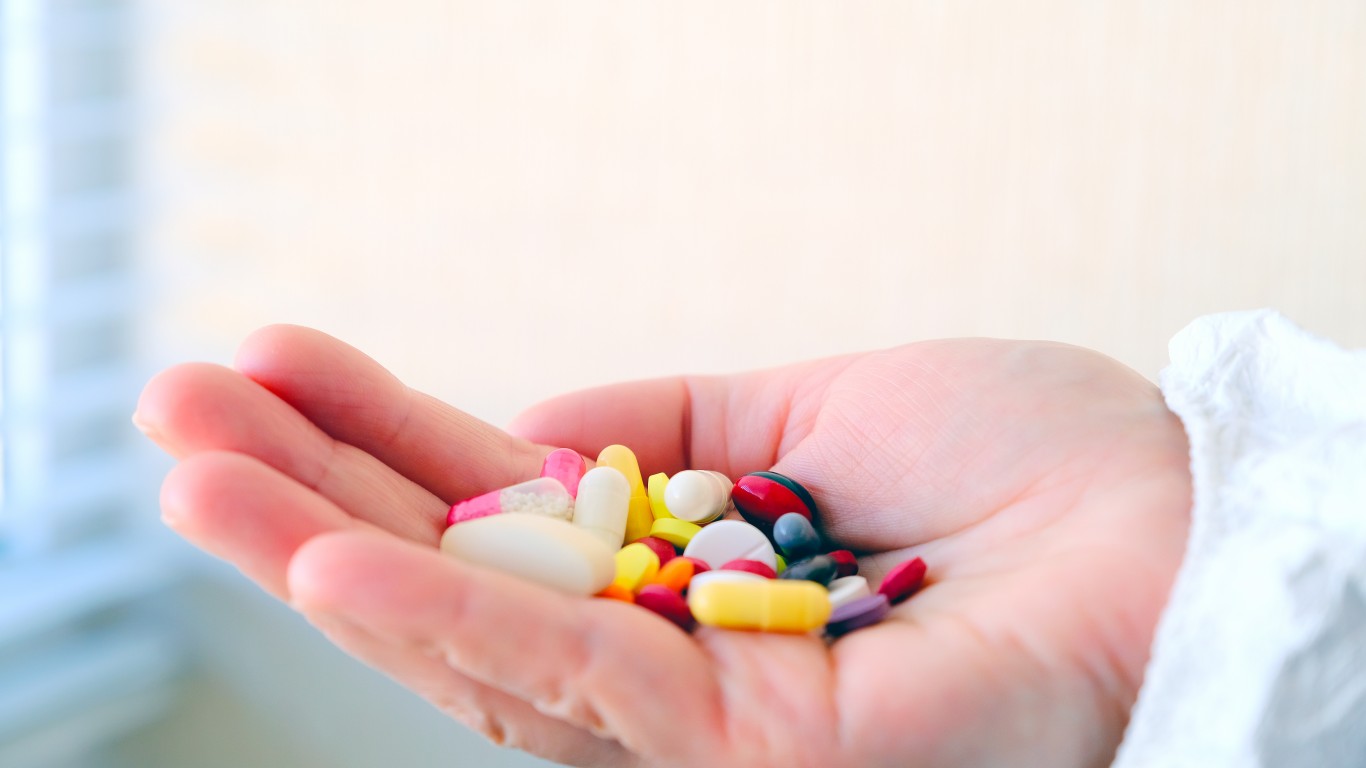
Millions rely on medication to manage their health. Whether it’s a quick prescription to treat an illness or a long-term medication for a chronic illness, the vast majority of Americans do take some sort of medication.
This list explores the top 50 prescribed drugs, providing a snapshot of the most prevalent health concerns and treatment approaches in the US today. It includes everything from medications that treat heart conditions to those that address acute needs like infections!
We used medication statistics from DrugStats, which is a standardized database provided by the U.S. government. It tracks over three billion drug prescriptions each year.
This list is organized in a countdown style according to the number of prescriptions (not necessarily the number of patients), so you’ll find the most common drug at the end! (You may be surprised that some of these popular medications are actually running out.)
Why Does It Matter?
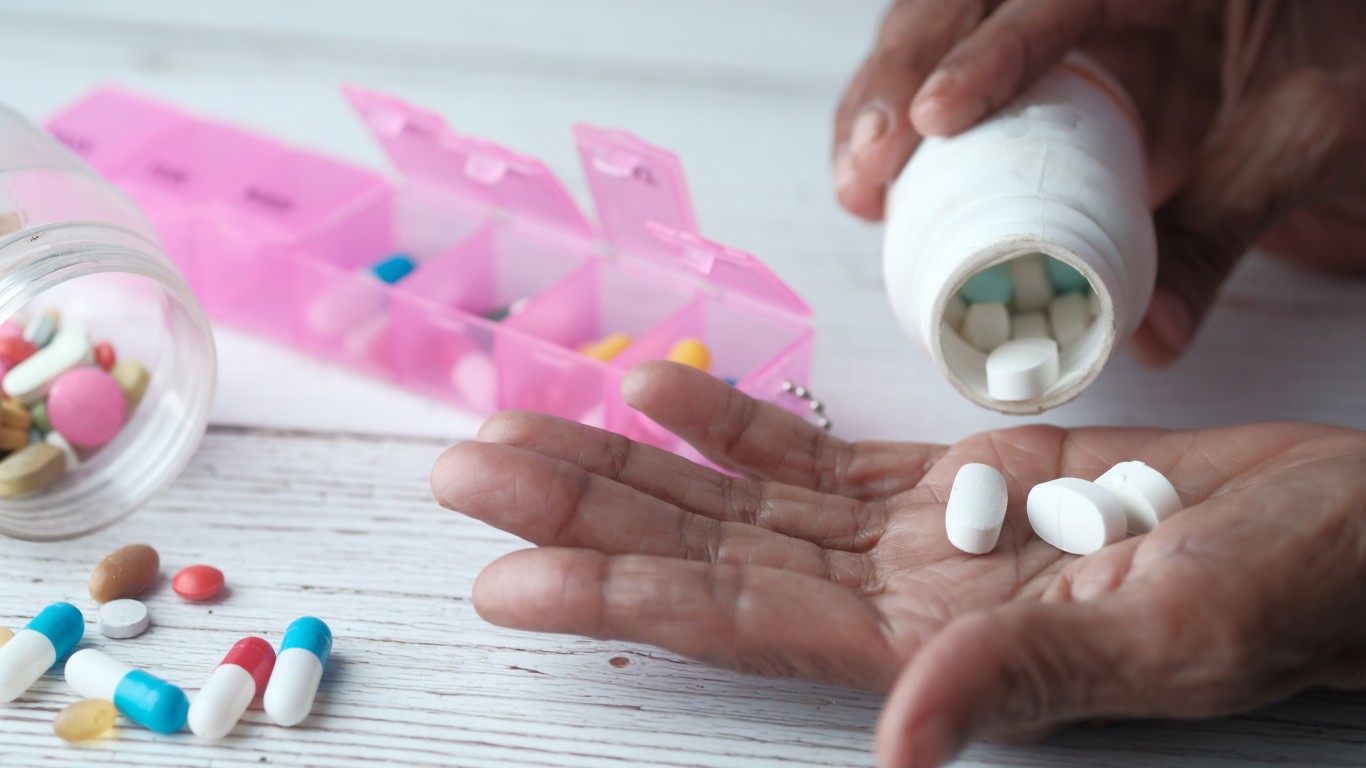
Prescription drugs play a huge role in healthcare costs, which impact individuals, families, and the nation. These medications are a major expense for many Americans. Understanding the commonly prescribed drugs can help you prepare for future healthcare costs.
50. Lamotrigine

- Total Prescriptions: 13,244,443
- Total Patients: 1,957,025
Lamotrigine is an anticonvulsant medication that’s largely used to treat epilepsy, seizures, and bipolar disorder. It works for this range of conditions by stabilizing the electrical activity in the brain, preventing abnormal firings (which cause seizures and can mess with mood).
49. Cetirizine

- Total Prescriptions: 13,929,421
- Total Patients: 4,000,093
This medication is commonly known as Zyrtec and treats allergy symptoms like hives and itching. It’s an antihistamine, so it works by blocking the effects of histamine, a chemical released in the body during an allergic reaction.
You’ll notice that the number of patients prescribed this medication is very high, meaning that most people on the medication do not get very many prescriptions.
48. Glipizide

- Total Prescriptions: 13,998,178
- Total Patients: 3,402,458
Glipizide is an antidiabetic medication that’s used to treat type 2 diabetes. It stimulates the pancreas to produce insulin, a hormone responsible for regulating blood sugar. Because it increases insulin production, it can help the body manage blood sugar without using artificial insulin.
47. Atenolol

- Total Prescriptions: 14,107,487
- Total Patients: 3,384,297
Atenolol treats high blood pressure, irregular heartbeats, and angina. It blocks adrenaline in the heart, slowing down the heart rate. This reduces blood pressure and can help manage chest pain. It’s categorized as a beta-blocker.
46. Clonazepam

- Total Prescriptions: 14,197,547
- Total Patients: 2,352,995
Clonazepam is similar to Xanax, but it is used to treat a larger variety of mood disorders. For instance, it can treat panic disorders, seizures, and anxiety. It calms the nervous system down, which allows it to reduce anxiety and control epilepsy.
Most patients using this medication are on it chronically, which is why the total patient statistic is a bit low!
45. Cyclobenzaprine

- Total Prescriptions: 14,426,039
- Total Patients: 5,107,046
Cyclobenzaprine is a muscle relaxant that can relieve pain and stiffness caused by muscle spasms. It blocks pain signals from reaching the brain, providing relief from injuries or musculoskeletal conditions.
44. Venlafaxine

- Total Prescriptions: 15,122,966
- Total Patients: 3,008,776
Venlafaxine is most commonly called Effexor. It’s one of the more common antidepressant medications, though it’s also used to treat anxiety and panic disorders. It works by balancing chemicals in the brain, including serotonin, which helps stabilize many mood disorders.
43. Methylphenidate

- Total Prescriptions: 15,282,088
- Total Patients: 2,440,779
Methylphenidate is a less common ADHD medication. It stimulates the central nervous system, increasing focus and alertness. It can also treat narcolepsy. Most patients take this medication regularly, so the total number of patients is actually quite low.
42. Alprazolam

- Total Prescriptions: 15,380,320
- Total Patients: 3,325,555
Just about everyone knows what Xanax is. It treats anxiety and panic disorders by calming the central nervous system. This medication has slowly become less and less popular, though, as medications with fewer side effects become available.
41. Tramadol

- Total Prescriptions: 15,446,495
- Total Patients: 5,026,719
Tramadol is a narcotic medication that treats moderate to severe pain. It’s similar to opioids in that it reduces the perception of pain in the central nervous system. Most patients are only on Tramadol for a limited amount of time.
40. Allopurinol

- Total Prescriptions: 15,706,780
- Total Patients: 3,768,723
Allopurinol is a xanthine oxidase inhibitor medication that reduces uric acid levels in the bloodstream. Uric acid is a waste product produced during the breakdown of purines found naturally in the body and certain foods. However, when uric acid levels become too high, it can cause gout.
Allopurinol helps prevent gout attacks and manage existing gout.
39. Pravastatin

- Total Prescriptions: 15,936,065
- Total Patients: 3,917,270
As you might guess from the name, Pravastatin is a statin medication utilized to lower cholesterol levels. It reduces the risk of heart attack and stroke in at-risk individuals. It works by blocking the production of cholesterol in the liver.
38. Amoxicillin

- Total Prescriptions: 16,657,138
- Total Patients: 13,130,571
Amoxicillin is a very common antibiotic that’s used to treat many types of bacterial infections. Most individuals just take a round of the medication, so the total number of patients is extremely high.
It works by interfering with the bacteria’s ability to build their cell walls, ultimately stopping them from growing and multiplying.
37. Clopidogrel

- Total Prescriptions: 16,723,608
- Total Patients: 4,187,295
Clopidogrel is a blood thinner that prevents stroke, heart attacks, and similar cardiovascular conditions. It’s an antiplatelet medication that prevents platelets from sticking together and forming clots. Often, it’s used alongside aspirin.
36. Ibuprofen

- Total Prescriptions: 17,043,550
- Total Patients: 8,701,817
Ibuprofen is a nonsteroidal anti-inflammatory drug (NSAID) available to treat pain, inflammation, and fevers. It works by reducing prostaglandin production, just like aspirin. It’s exceptionally common and available over the counter. Many people use it to treat just about everything, ranging from headaches to menstrual cramps.
35. Ergocalciferol

- Total Prescriptions: 17,179,725
- Total Patients: 5,191,630
Ergocalciferol treats vitamin D deficiency, which can lead to bone softening and muscle weakness. Many people in the United States have vitamin D deficiency, making this a pretty common medication.
34. Aspirin
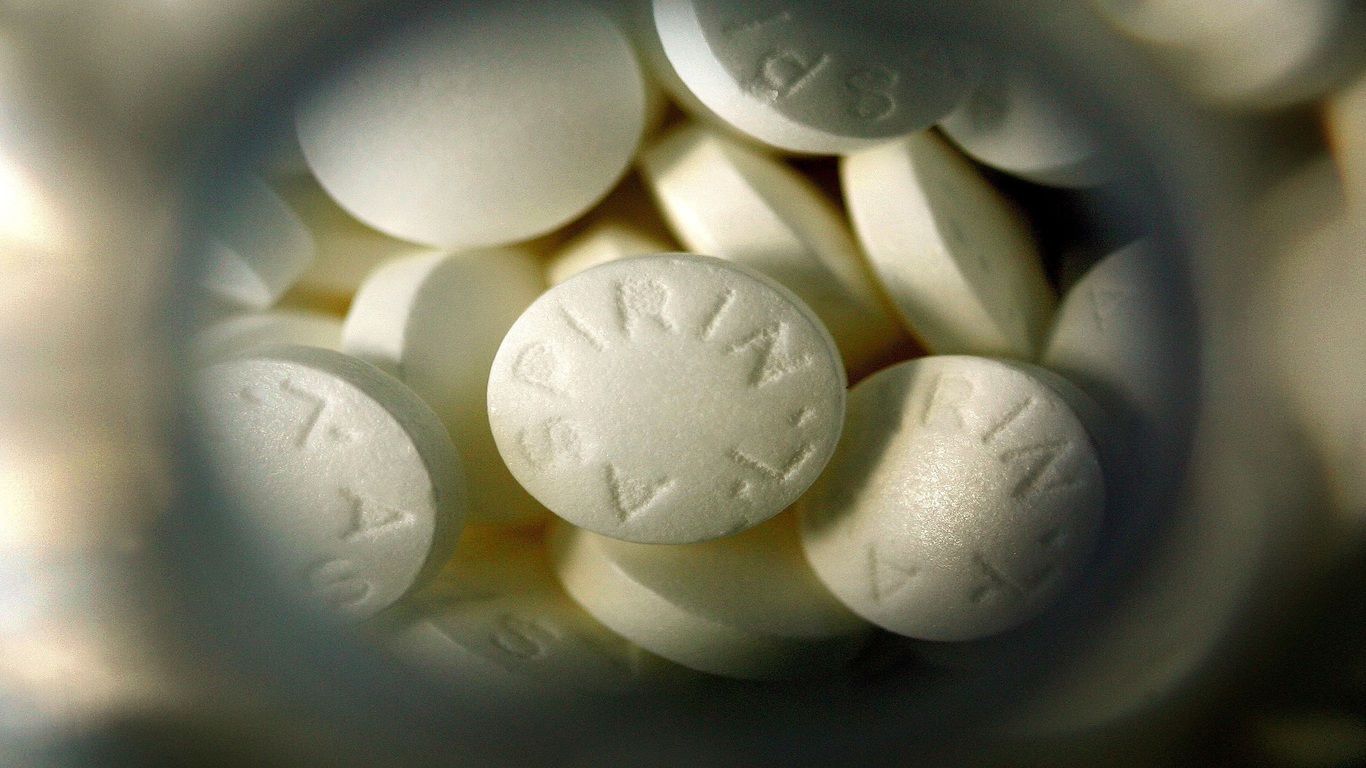
- Total Prescriptions: 17,686,612
- Total Patients: 5,286,487
Aspirin is a nonsteroidal anti-inflammatory drug (NSAID) that relieves pain, fever, and inflammation. It works similarly to ibuprofen by reducing the production of prostaglandins. It’s available over the counter and is well-tolerated by most individuals, making it a popular choice for minor pain.
33. Apixaban
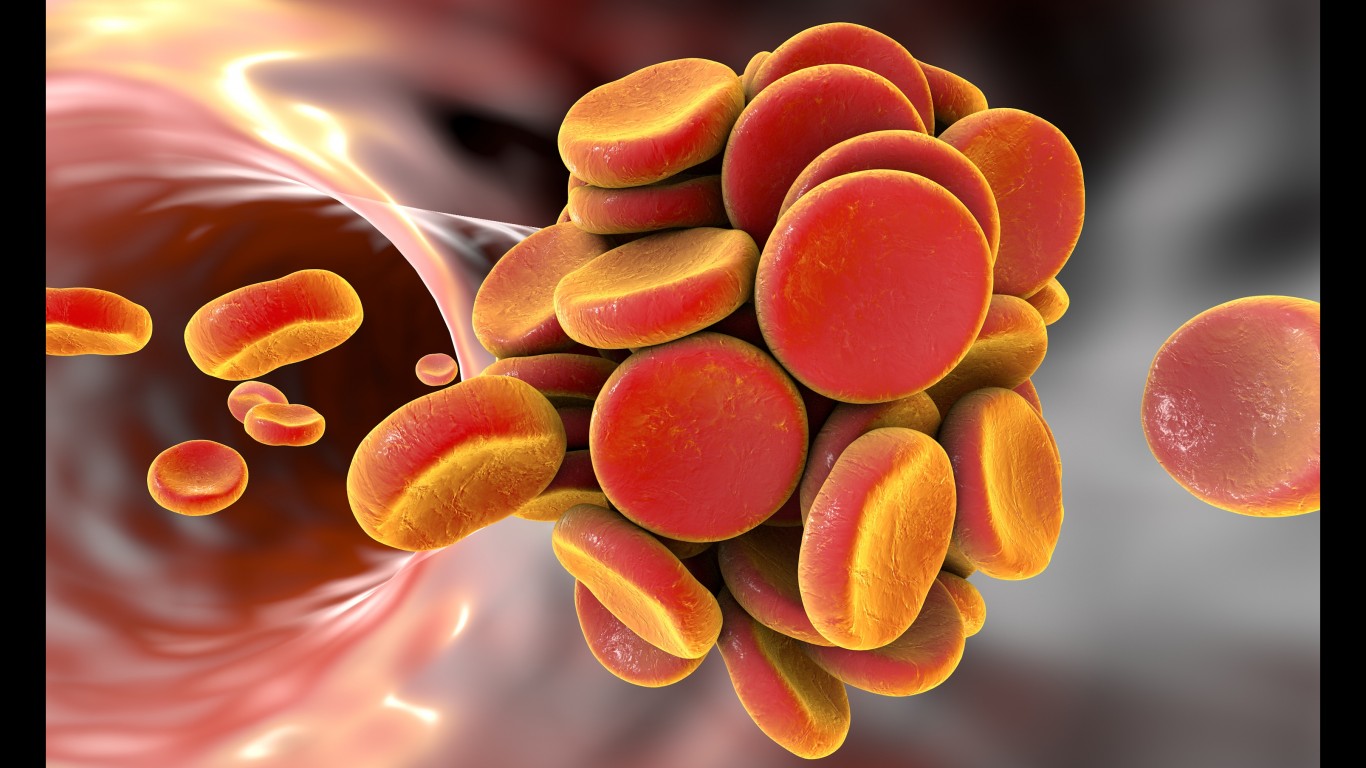
- Total Prescriptions: 17,933,195
- Total Patients: 4,021,147
Apixaban is another medication that can prevent blood clots. It works by blocking the activity of very specific clotting factors, reducing the blood’s clotting ability. It can reduce the risk of stroke, heart attack, and pulmonary embolism by preventing the formation of new clots.
32. Meloxicam

- Total Prescriptions: 18,226,904
- Total Patients: 5,819,321
Meloxicam is another nonsteroidal anti-inflammatory drug (NSAID) used to manage pain. However, it’s most specifically used to treat arthritis pain. It reduces the production of prostaglandins, which can cause inflammation. By reducing these chemicals, it can help manage arthritis.
31. Citalopram

- Total Prescriptions: 18,444,405
- Total Patients: 4,126,597
Citalopram is more commonly known as Celexa. It’s used to treat depression and works by increasing serotonin levels. It can improve mood and increase energy levels.
30. Potassium Chloride
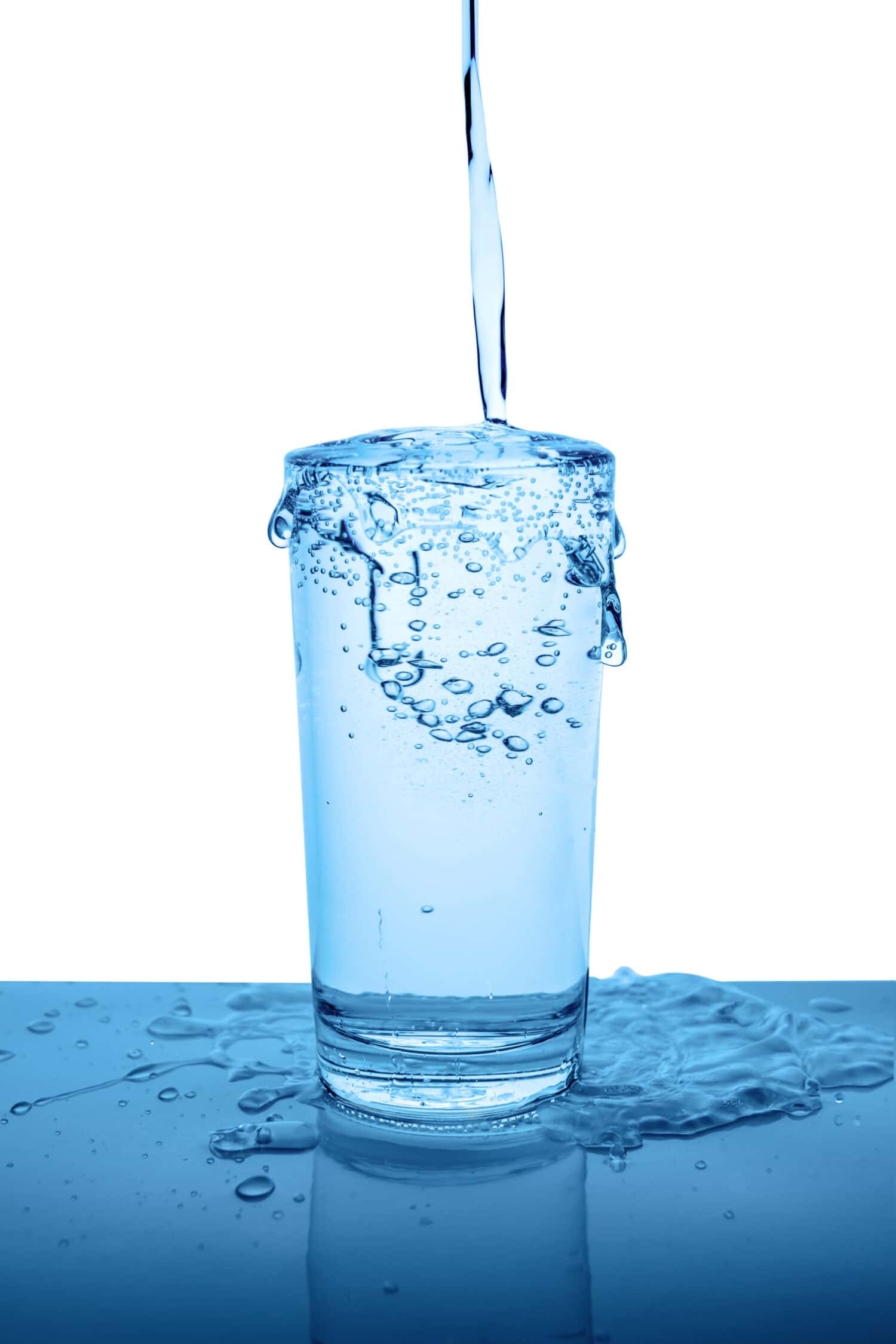
- Total Prescriptions: 18,444,405
- Total Patients: 4,126,597
Potassium chloride is an electrolyte supplement that treats and prevents low potassium levels. Potassium is vital for bodily functions like muscle contractions and nerve impulses. Low potassium levels can occur due to dehydration and certain medications.
29. Insulin Glargine
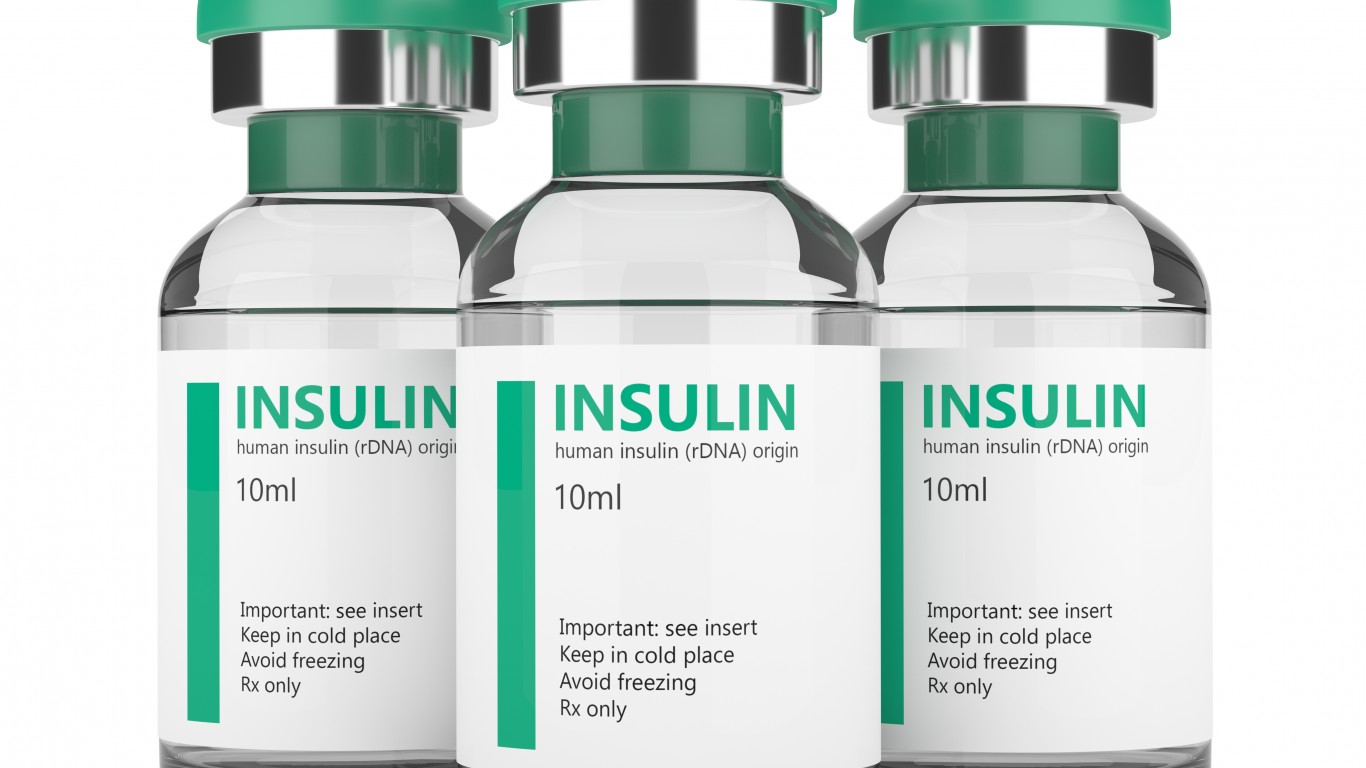
- Total Prescriptions: 19,873,255
- Total Patients: 3,901,230
Insulin Glargine is a long-acting insulin that’s used for type 1 and type 2 diabetes. This type of insulin provides a steady level of insulin throughout the day, helping regulate blood sugar.
28. Prednisone

- Total Prescriptions: 19,898,457
- Total Patients: 8,660,906
Prednisone is a corticosteroid medication that’s used for tons of different conditions. It suppresses the immune system’s response, reducing inflammation in the process. It’s most commonly prescribed for autoimmune disorders, asthma, allergic reactions, and even cancer. However, it’s linked with tons of side effects.
27. Duloxetine

- Total Prescriptions: 20,012,841
- Total Patients: 4,444,533
Duloxetine is a serotonin-norepinephrine reuptake inhibitor (SNRI). It’s mostly used to treat depression and other mood disorders. However, it’s also prescribed for neuropathy, fibromyalgia, and other types of chronic pain.
26. Carvedilol

- Total Prescriptions: 21,782,177
- Total Patients: 5,039,099
Carvedilol is another beta-blocker that’s used to treat high blood pressure. It works just like other beta-blockers – by preventing adrenaline from affecting the heart. It can also relax blood vessels and improve blood flow throughout the body.
25. Fluoxetine

- Total Prescriptions: 22,686,838
- Total Patients: 4,764,311
Most people know Fluoxetine as Prozac. It’s a widely used antidepressant medication, though it can treat other mood disorders, too. It increases levels of serotonin, which plays a role in mood regulation.
24. Tamsulosin

- Total Prescriptions: 23,540,060
- Total Patients: 6,474,672
Tamsulosin is an alpha-blocker that treats an enlarged prostate gland. It relaxes the muscles around the prostate and bladder, improving urine flow and reducing uncomfortable symptoms like frequent urination.
23. Fluticasone

- Total Prescriptions: 25,283,015
- Total Patients: 7,859,173
Fluticasone is a corticosteroid that controls inflammation in the airway. It’s most commonly prescribed for asthma but can also be used for hay fever. In some cases, it’s even utilized for eczema.
22. Trazodone

- Total Prescriptions: 26,310,083
- Total Patients: 5,322,910
Trazodone is an antidepressant medication that’s used for depression, other mood disorders, and sleeping difficulties. We don’t understand exactly how it works, but it’s thought to affect brain chemicals to improve mood regulation.
21. Furosemide

- Total Prescriptions: 26,376,404
- Total Patients: 6,473,988
Furosemide is a diuretic medication used for many conditions. It reduces fluid retention and swelling, so it’s commonly prescribed to help reduce symptoms associated with heart failure, liver disease, and kidney disease. It also increases urine output, helping the body get rid of fluids.
20. Acetaminophen; Hydrocodone
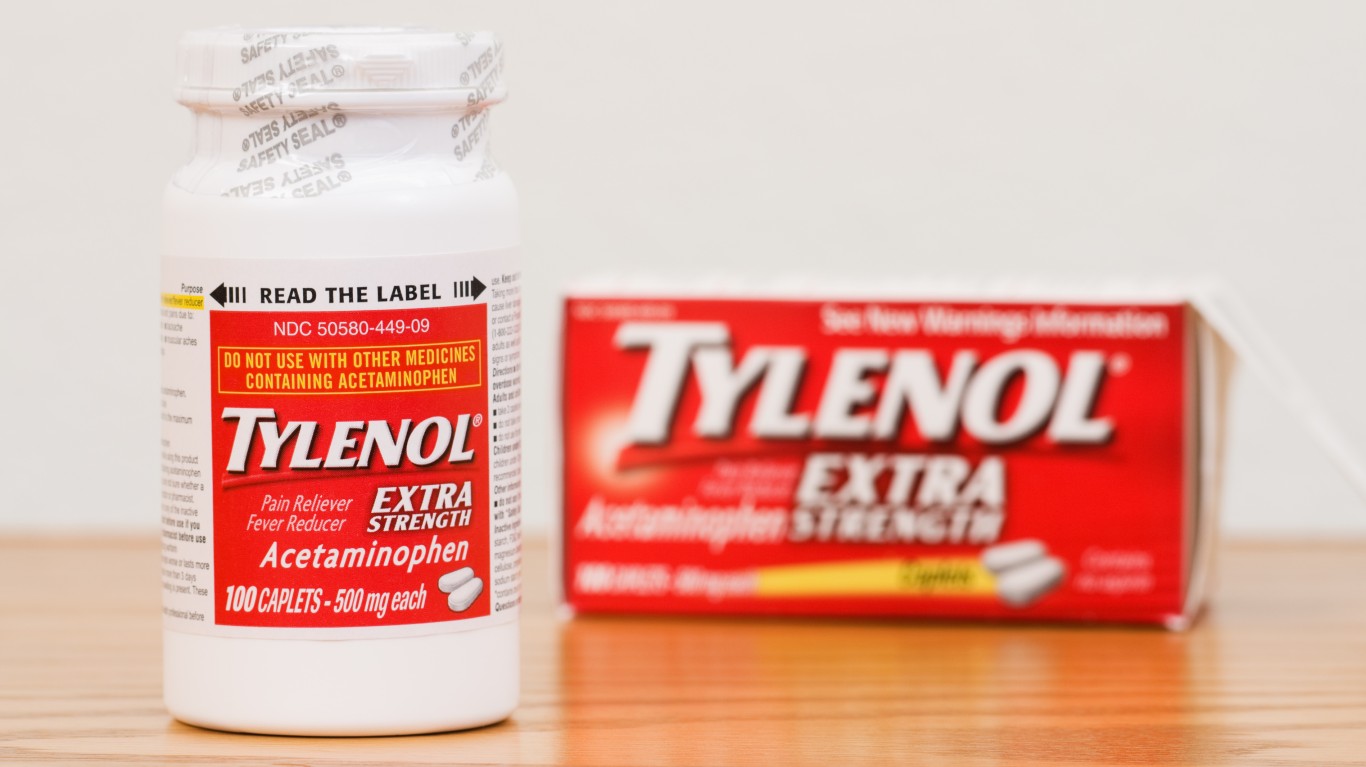
- Total Prescriptions: 26,599,439
- Total Patients: 8,616,204
Acetaminophen; Hydrocodone is usually called Vicodin and is a combination medication. It combines Tylenol and hydrocodone, a narcotic pain medication. Usually, it’s used to reduce severe pain. It’s a powerful medication with a risk of dependence.
19. Pantoprazole

- Total Prescriptions: 27,347,488
- Total Patients: 7,310,342
Pantoprazole is a proton-pump inhibitor (PPI) medication used to reduce stomach acid production. It prevents proton pumps in the stomach lining from working, which reduces stomach acid. It’s prescribed for conditions like acid reflux disease and heartburn.
18. Bupropion

- Total Prescriptions: 29,099,445
- Total Patients: 6,412,363
Bupropion is a versatile drug that’s used to treat everything from depression to smoking. We don’t understand how it works, but it likely affects dopamine levels in the brain. This influences mood and motivation, leading to its versatile uses.
17. Dextroamphetamine/Amphetamine

- Total Prescriptions: 30,371,088
- Total Patients: 3,990,803
You probably know this medication as Adderall. It’s a central nervous system stimulant medication that treats ADHD. It increases levels of dopamine in the brain, improving attention and focus.
16. Simvastatin

- Total Prescriptions: 30,492,289
- Total Patients: 7,839,909
Simvastatin is another statin that reduces cholesterol, reducing heart disease risks. It prevents the liver from producing cholesterol, which lowers LDL cholesterol levels. It’s typically a first-line medication for those with high cholesterol.
15. Escitalopram

- Total Prescriptions: 30,505,719
- Total Patients: 6,499,379
Escitalopram is an SSRI, allowing it to treat depression and generalized anxiety disorder. It increases serotonin levels in the brain, improving mood and reducing anxiety.
14. Montelukast

- Total Prescriptions: 30,996,712
- Total Patients: 7,119,519
Montelukast is a leukotriene receptor antagonist (LTRA). It prevents allergies and asthma attacks by blocking the action of leukotrienes. These chemicals are involved in inflammatory responses like wheezing and coughing.
13. Rosuvastatin

- Total Prescriptions: 32,632,145
- Total Patients: 8,006,428
Rosuvastatin is a statin medication, as the name suggests. It lowers cholesterol levels and reduces the risk of heart disease. It’s often prescribed along with lifestyle changes like diet and exercise.
12. Hydrochlorothiazide

- Total Prescriptions: 39,038,822
- Total Patients: 9,665,980
Hydrochlorothiazide is a diuretic medication that treats fluid retention and high blood pressure. Like other diuretic medications, it increases urine output, helping the body eliminate excessive fluids.
11. Sertraline
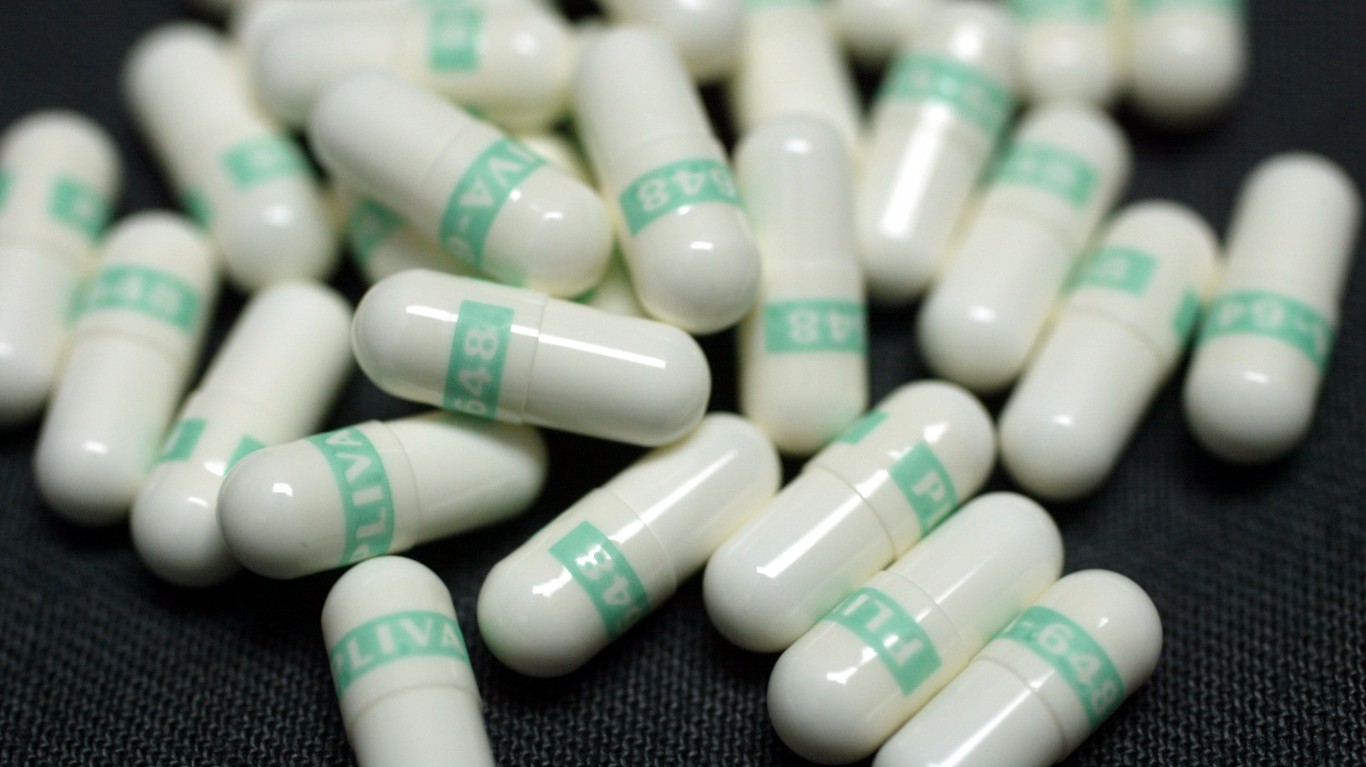
- Total Prescriptions: 39,206,397
- Total Patients: 8,478,900
You may know this medication as Zoloft, which is a widely used antidepressant medication. It increases serotonin levels in the brain, regulating emotions and sleep. Sertraline is prescribed for depression, obsessive-compulsive disorder (OCD), posttraumatic stress disorder (PTSD), premenstrual dysphoric disorder (PMDD), and other anxiety disorders.
10. Gabapentin
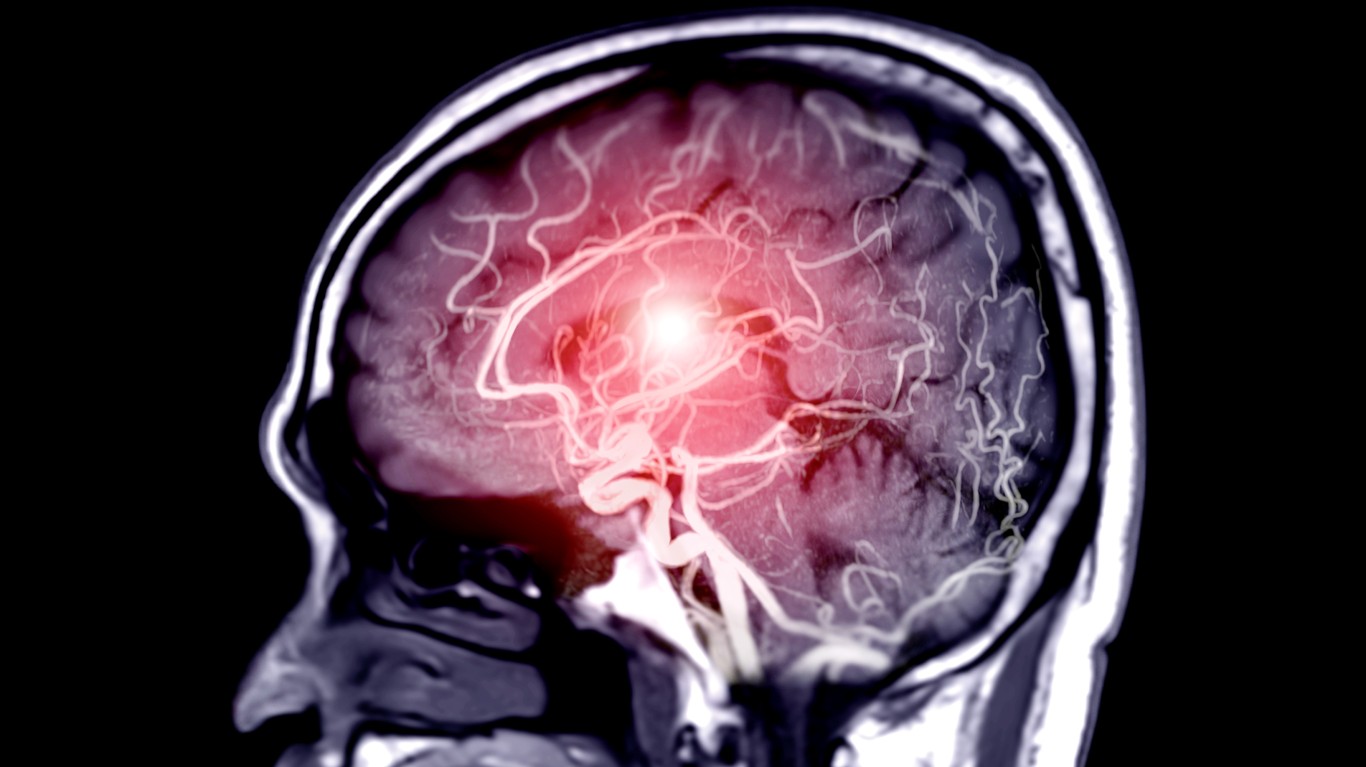
- Total Prescriptions: 47,125,973
- Total Patients: 10,697,239
Gabapentin is an anticonvulsant, meaning that it can prevent seizures. But it also has pain-relieving properties.
9. Omeprazole

- Total Prescriptions: 54,561,969
- Total Patients: 13,900,115
This medication is a proton pump inhibitor that reduces stomach acid. It’s prescribed for conditions like peptic ulcers and heartburn. It reduces symptoms like chest pain and ulcers.
8. Losartan
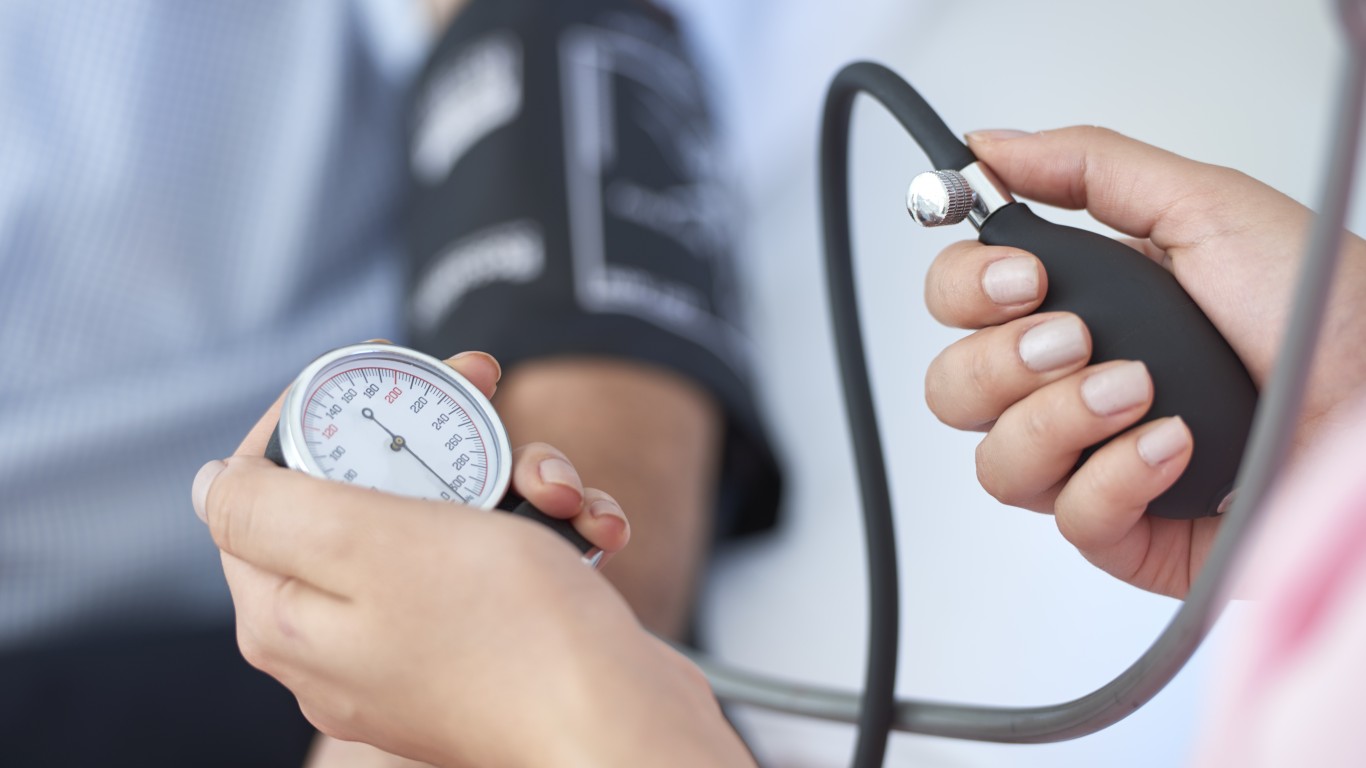
- Total Prescriptions: 55,245,074
- Total Patients: 13,363,279
This is an angiotensin receptor blocker (ARB) medication used to treat high blood pressure and kidney disease in diabetic patients. It blocks hormones that cause blood vessels to constrict, leading to lower blood pressure.
7. Albuterol

- Total Prescriptions: 61,469,064
- Total Patients: 18,070,429
Albuterol is commonly prescribed as a breathing treatment for lung diseases like asthma and COPD. It relaxes the muscles in the airways, making it easier for patients to breathe.
6. Metoprolol

- Total Prescriptions: 65,529,551
- Total Patients: 15,535,072
Metoprolol is a beta-blocker medication that treats high blood pressure (like other beta-blockers we’ve discussed). It slows down the heart rate and reduces the force of heartbeats, lowering blood pressure.
5. Amlodipine

- Total Prescriptions: 73,569,606
- Total Patients: 17,734,288
Amlodipine is a calcium channel blocker used to treat high blood pressure. It relaxes the muscles in the walls of the blood vessels, allowing the blood to flow more easily.
4. Lisinopril

- Total Prescriptions: 88,272,557
- Total Patients: 20,475,892
Lisinopril is an ACE inhibitor utilized to treat high blood pressure and prevent heart failure. It relaxes the blood vessels, reducing the strain on the heart. Most patients take this medication chronically.
3. Levothyroxine

- Total Prescriptions: 89,309,050
- Total Patients: 19,064,382
Levothyroxine is a synthetic thyroid hormone medication. It treats hypothyroidism, a condition where the thyroid gland doesn’t produce enough thyroid hormone. Those on this medication must often continue taking it through the rest of their life.
2. Metformin

- Total Prescriptions: 91,151,043
- Total Patients: 19,883,763
Metformin is the most popular antidiabetic medication used to treat type 2 diabetes. It helps the body use insulin more effectively, reducing the progression of the disease. It’s often used before synthetic insulin.
1. Atorvastatin

- Total Prescriptions: 116,702,335
- Total Patients: 28,111,470
Atorvastatin is the most popular drug in the United States. Like other statins on this list, it reduces cholesterol and the risk of heart problems. It’s used alongside proper diet to help lower cholesterol in the blood, improving heart health. Luckily, it’s often well-tolerated and doesn’t produce many serious side effects.
Thank you for reading! Have some feedback for us?
Contact the 24/7 Wall St. editorial team.


